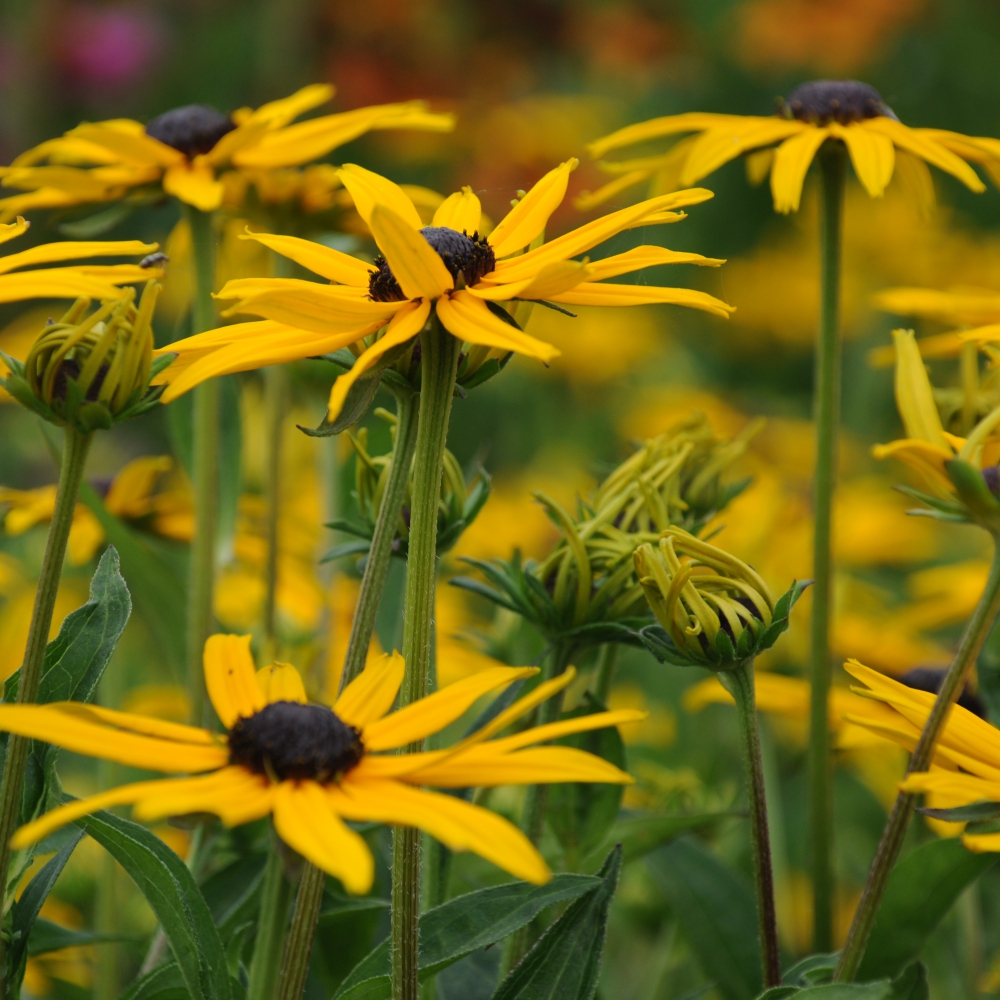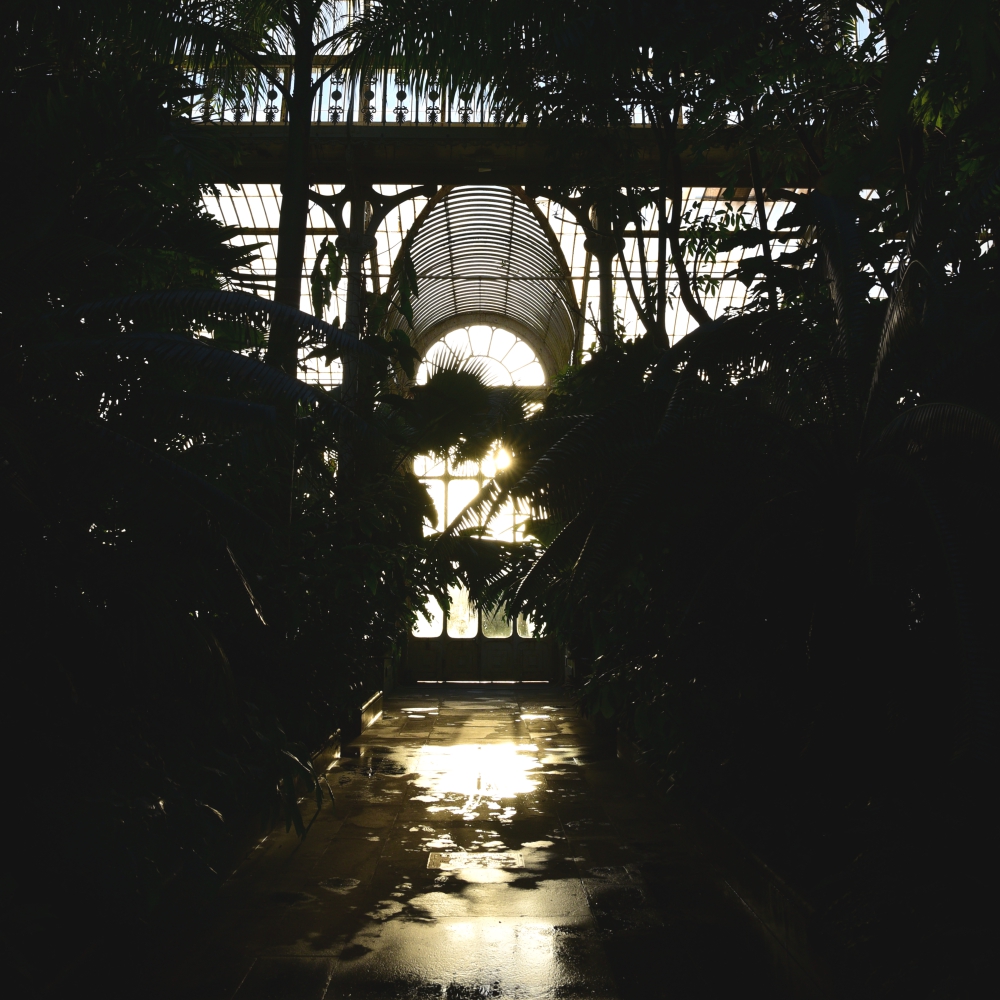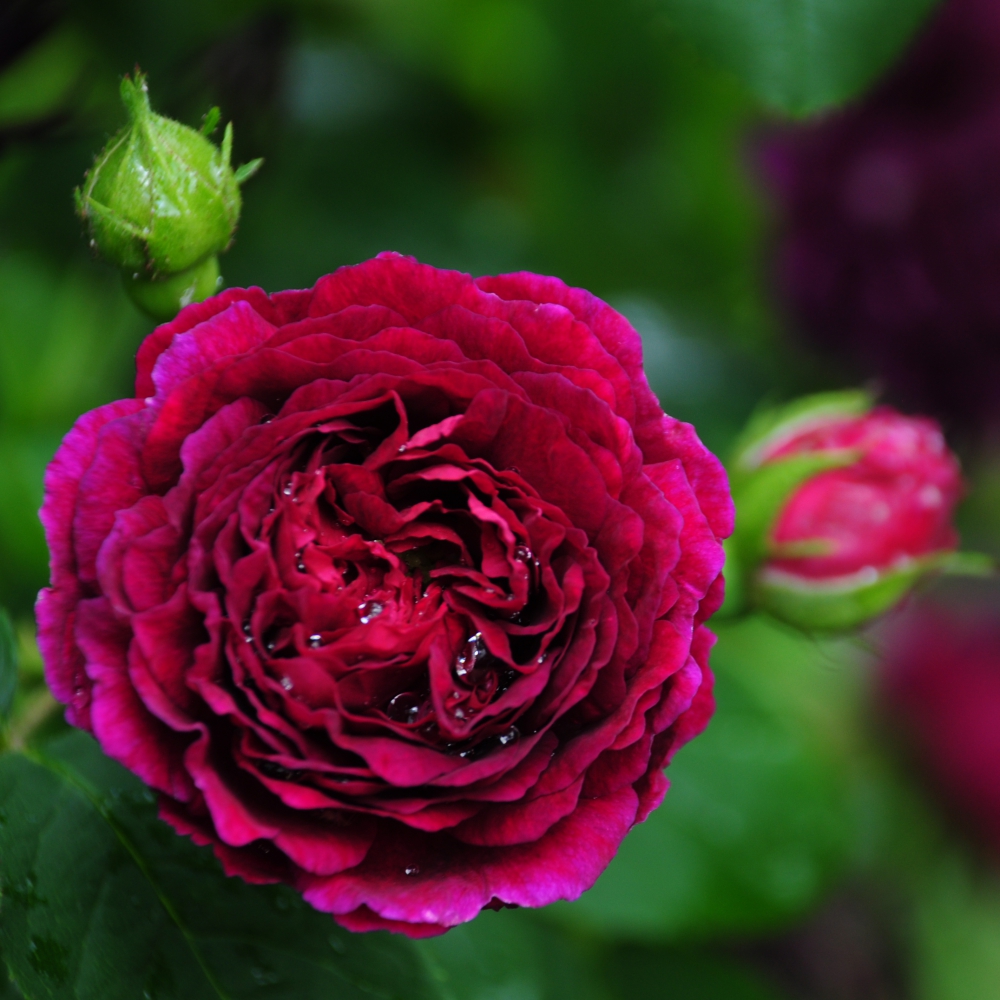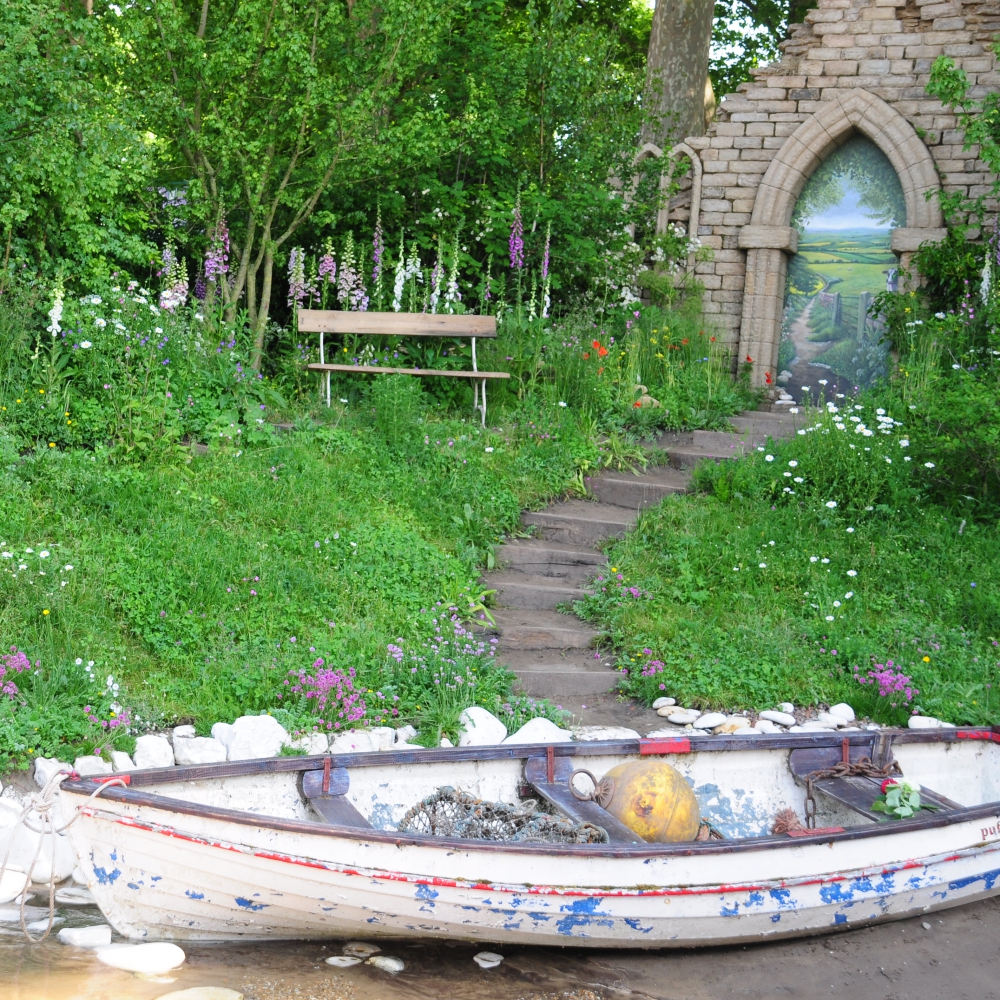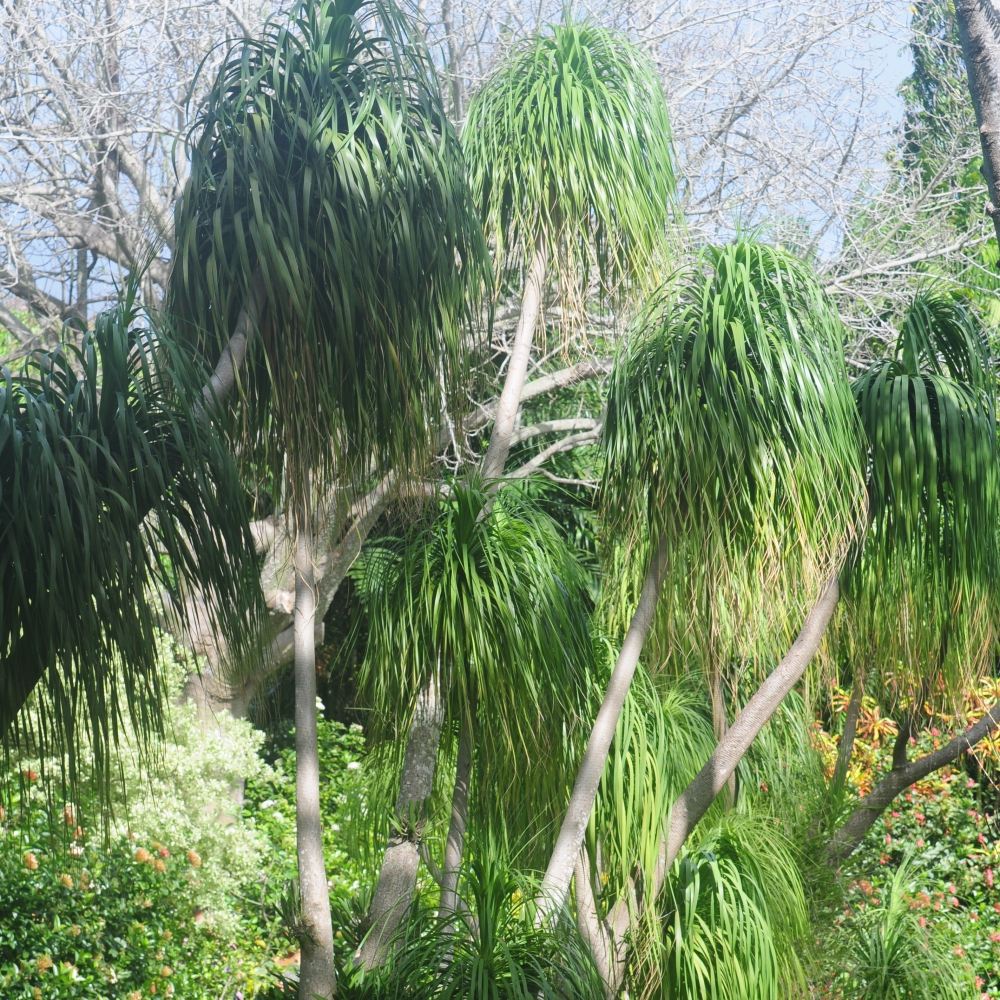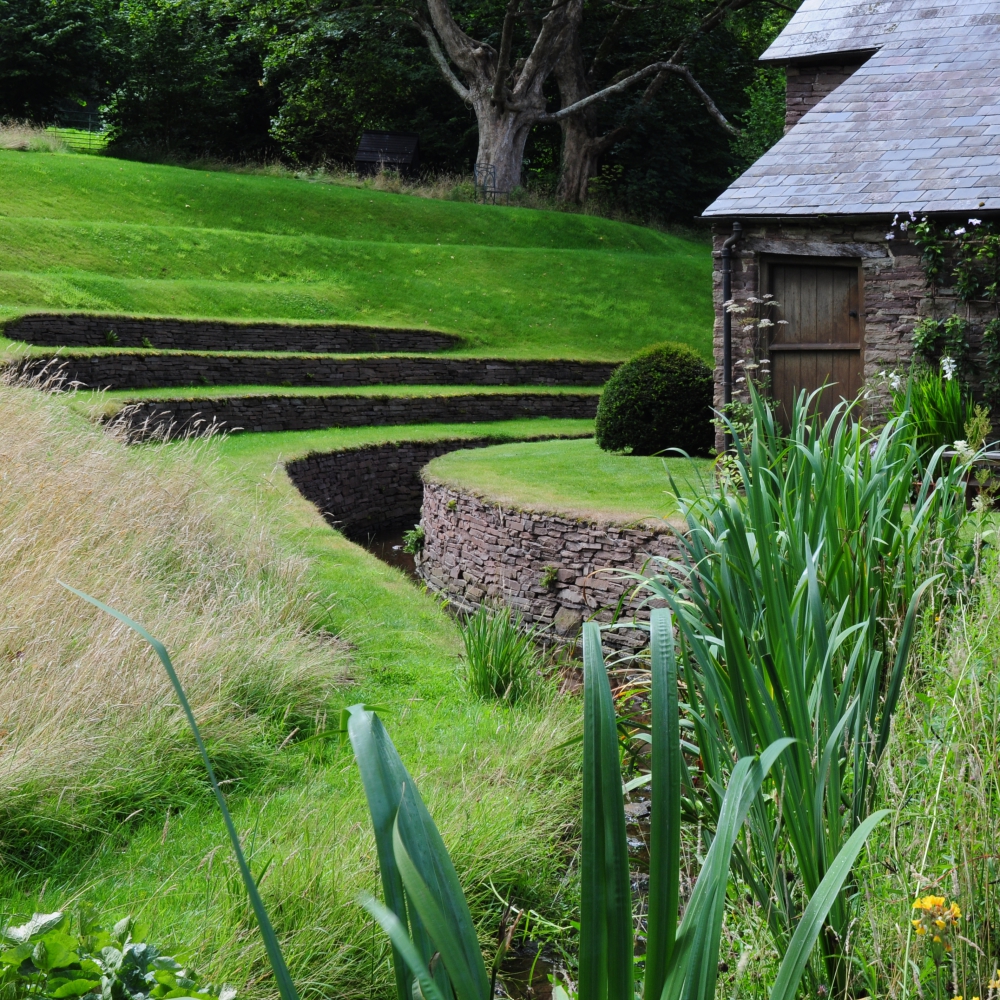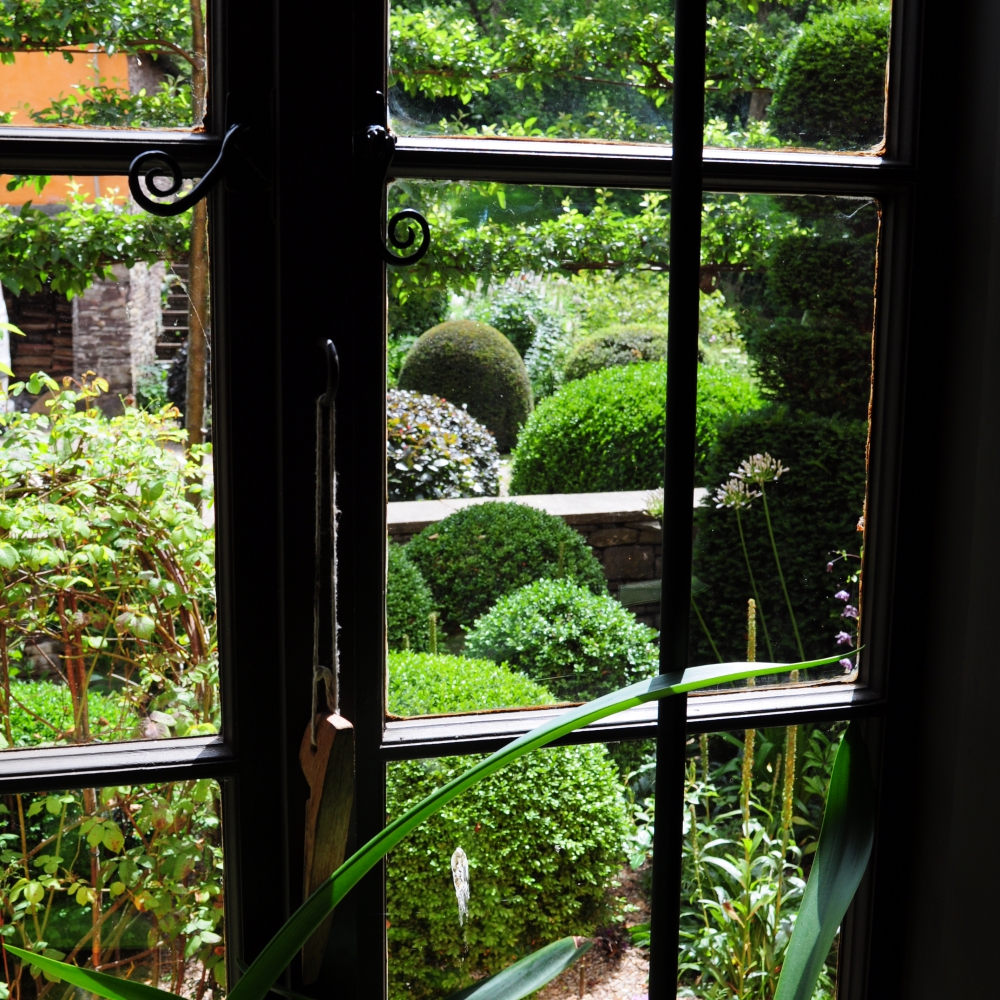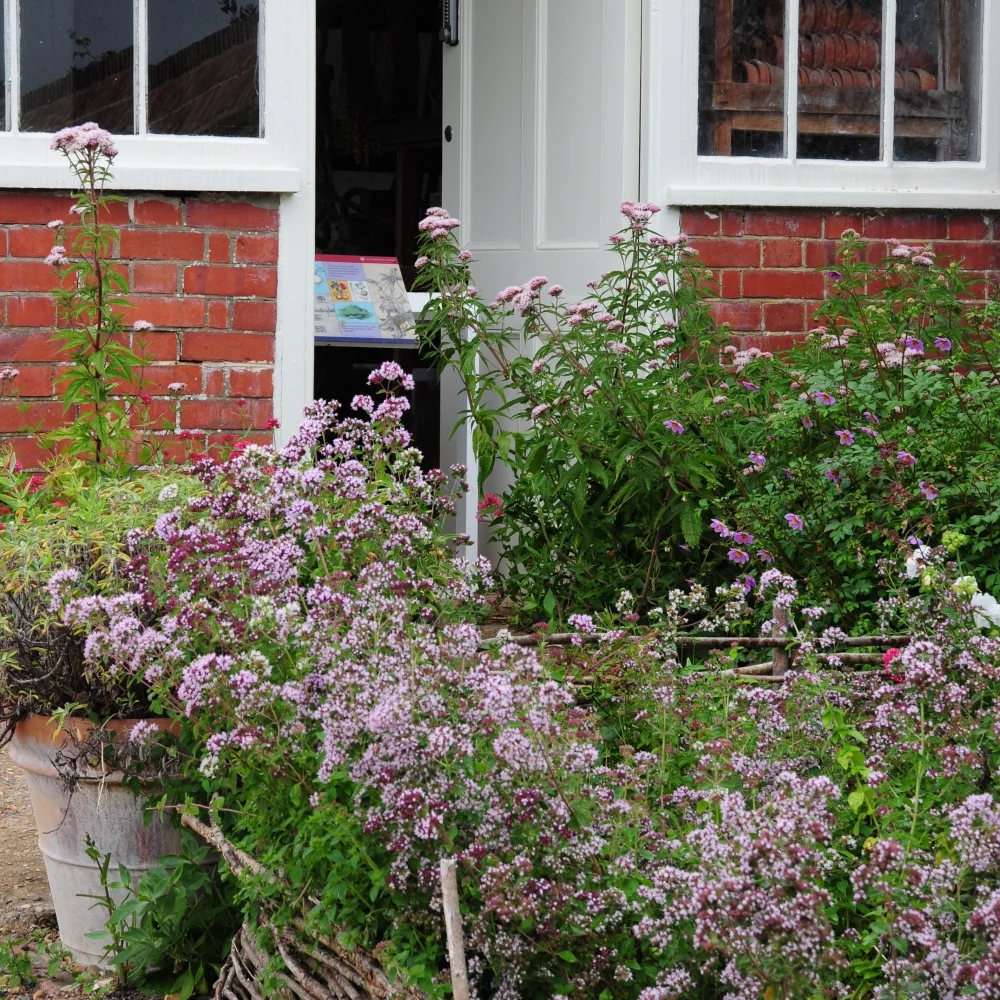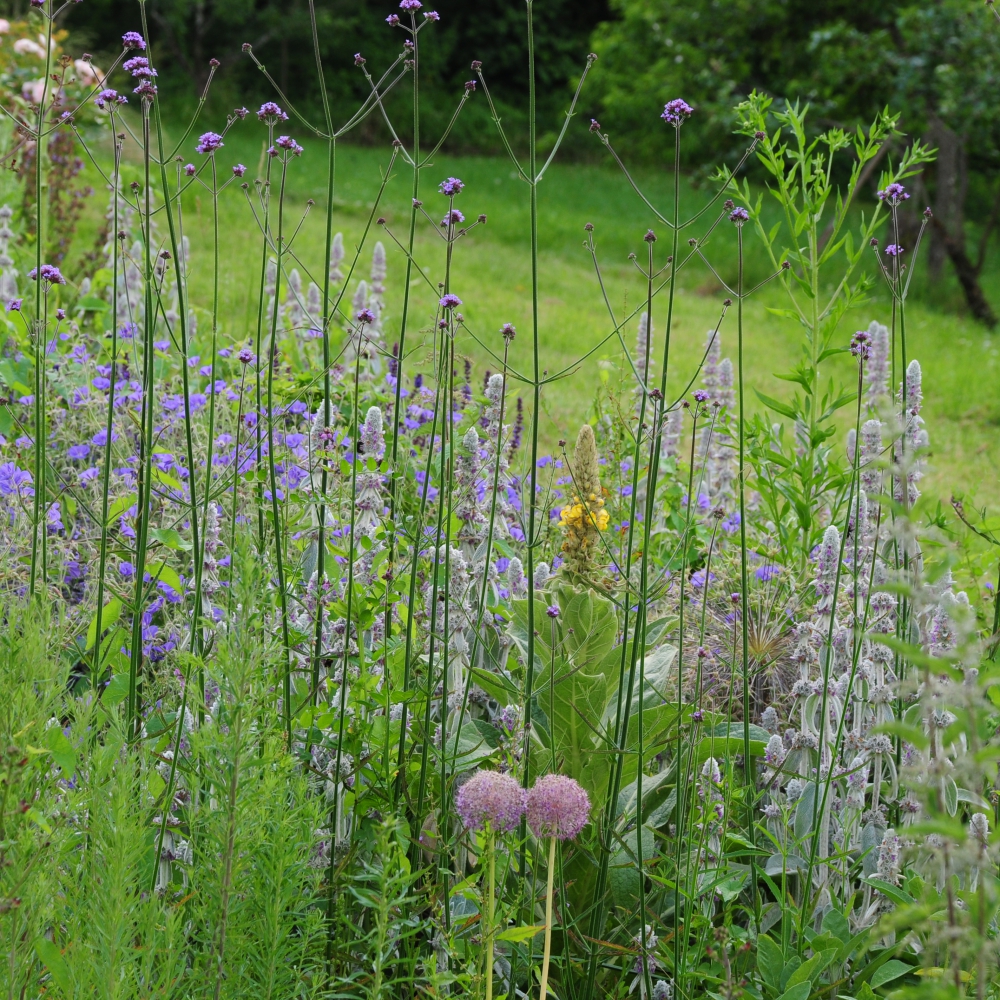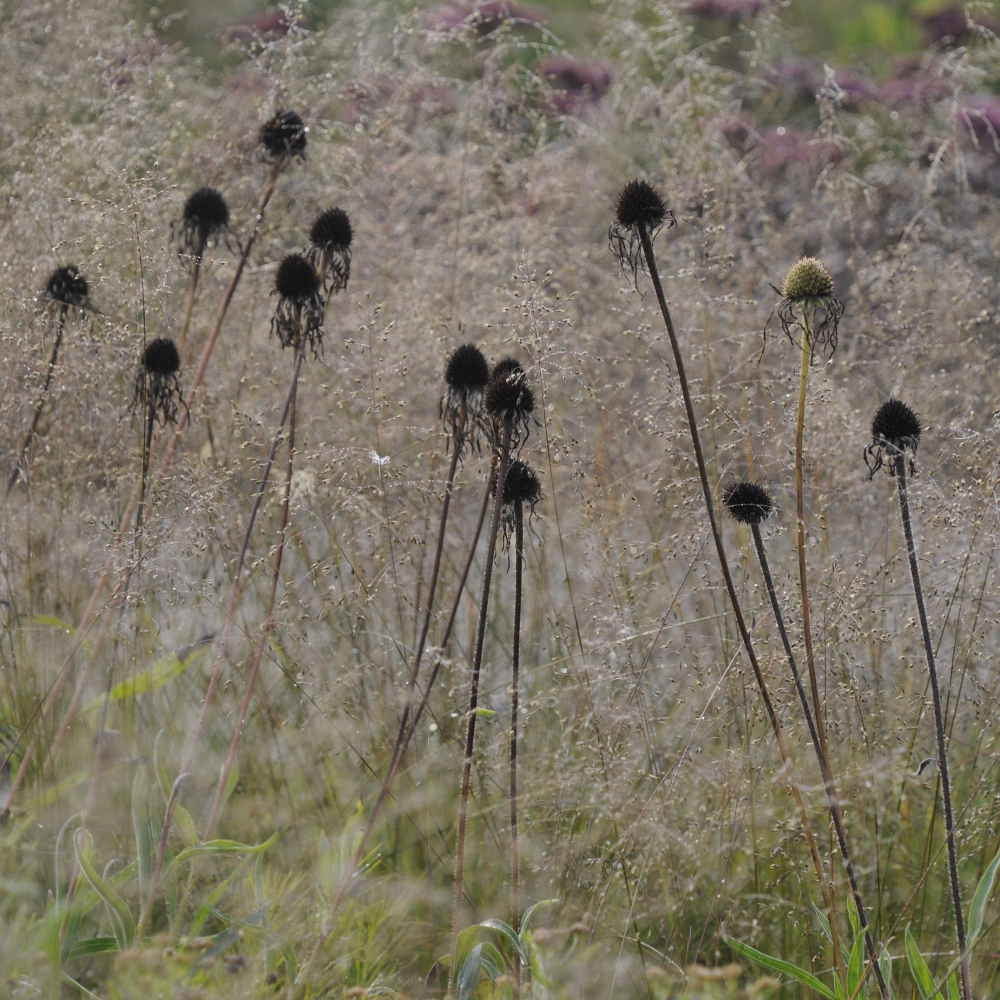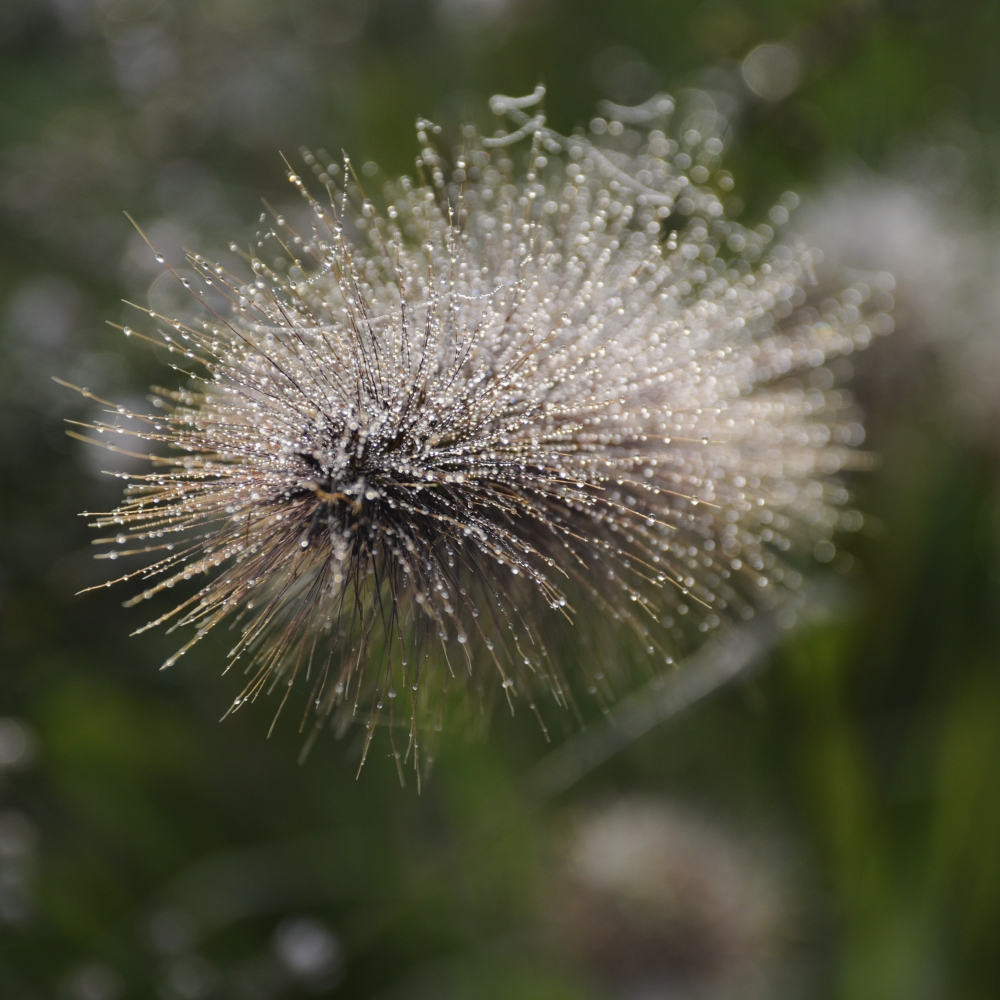Lukesland Gardens
I feel very lucky to have friends with friends with amazing gardens. Last weekend I stayed with John and Lorna Howell, owners of Lukesland in Devon.
The garden covers around 26 acres of woodland, streams, arboreta (there's more than one), rhododendrons, azaleas, wild flowers and a kitchen garden.
The garden was started by the Matthews family in the 1860s, followed by the McAndrews in the 1870s, but has been tended to and developed by the Howell family since the 1930s.
The garden has become known for some of its "Champion" trees, which means they are the oldest, tallest or with the largest girth in the county or country. The high level of rainfall, acidic soil and mildish climate makes it ideal for Camellias, Rhododendrons, Azaleas and Magnolias.
.I was told the Rhododendrons were past their best by the end of May but they still looked pretty good to me. However, this is prime Azalea flowering time, the reflections in some of the ponds were particularly stunning, better than the Isabella Plantation I think.
For me the streams and ponds are the highlight of the gardens. Addicombe Brook tumbles through the garden over cascades and Dartmoor granite rocks. It's not without hazard though as floods in recent years have washed away paths, bridges and sculpture and silted up ponds. They've been rebuilt and restored and you'd never know there'd been such devastation.
The wild flowers are also particularly attractive. There are bluebells in the Beech wood and in the Pinetum where they flower in the open with grasses, and along the stream with Red Campion.
The dampness means plants like Iris sibirica, asiatic Primulas, Gunnera and ferns thrive here, as well as some of the trees like the giant coastal Redwoods from the USA.
Lukesland is particularly well known for its three large Davidia involucrata, also known as the Hankerchief Tree, which were flowering during my visit. Unfortunately none of my photos could do them justice but if you're in the area in late spring seeing them is worth a visit on their own.
Although the tea room was busy (and yes I can recommend all the cakes as I tried most of them whilst serving the tea...) the gardens are so large it's easy to find a quiet spot to yourself.
One of the advantages of staying overnight is the opportunity to get up at the crack of dawn and wander around on your own, although the weather conspired against me and I didn't quite get the mist and low sunlight I was hoping for. Next time maybe...
The gardens are only open in the spring and then again in the autumn as the foliage of the Rhododendrons, Azaleas and Acers is stunning I'm told.
This garden is maintained by Lorna and John, John's mother Rosemary (who runs the guided tours) and three very part-time gardeners. Hats off to them all.
Lukesland - http://www.lukesland.co.uk/Index.htm
You can rent a cottage in the grounds - https://www.helpfulholidays.co.uk/cottage/Devon-East-Anstey/The-Clock-House-976251.html
Many thanks to John and Lorna and Rosemary and Desna (and Rob..).
Summer flowers for clay soils
Most gardeners in London will feel cursed with heavy clay soil. The very fine particuled structure means is has little air and water struggles to pass through it, making the soil like concrete in summer and glue in winter; planting in clay is difficult.
However, clay soils are usually very fertile so if improved with plenty of organic matter like compost, it will create an excellent base for many summer flowering plants.
For successful planting in clay soils preparation is key. Aside from digging in lots of compost, and mulching with compost afterwards, be sure to break up the bottom of the hole as well as the sides. This helps prevent the planting hole becoming a sump, holding water and causing the premature death of the plant.
These are some of my top performers for clay soil,many of which are long-flowering.
Rose - roses love clay soil. They are hungry plants so the nutrient rich soil is perfect for them. There are hundreds, if not thousands, to choose from. The rose pictured here is one of my favourites, Gertrude Jeckyll. It has a lovely scent and is one of the first to flower. Although described as a repeat flowerer it never quite repeats the first flush it gets in early June. As with all members of the rose family it's best not to plant new roses where you've removed old ones.
Hemerocallis - these plants flower prolifically over a number of weeks in mid-summer. They do well in clay soil but like some moisture as well as full sun. This one is called Stafford, ideal for a "hot" border but colours range from creamy-white, yellow, orange and dark red.
Helenium - one of my favourite plants for late summer. The flowers last a long time and if you refrain from dead-heading them they keep their form right through the winter. Heleniums are another good plant for hot borders with colours ranging from lemon yellow through to dark tawney oranges.
Rudbeckia - my absolute favourite flower for late summer. Like Heleniums they keep their forms through the winter. I tend to go for the shorter varieties like Deamii or Goldstar as they don't need staking.
Aster - there was a time when Asters were associated with mildew but most of the varieties on offer now are resistant. This one is Aster x frikartii Monch, it has an RHS Award of Garden Merit which is about as good as you can get for a reliable and good-looking plant.
Japanese anemone - these flower long and late and do particularly well if the soil is a little on the damp side. Many Japanese anemones will also do well with a little shade, making them doubly valuable in a London garden. I have found they take two to three years to become fully established, after that you may have to spend a bit of time pulling up the runners in the spring to make sure they don't colonise much of the garden.
Foxglove - both the wild and cultivated varieties grow well in a range of soils, as long there is a bit of moisture. Native foxgloves grow at the edge of woodland so prefer a semi-shaded position rather than full sun all day.
Persicaria - another late flowering plant that grows well in clay soils as long as there is some moisture. Most forms of Persicaria will spread to form weed-supressing clumps, a bonus if you're a low maintenance kind of gardener...
Lilac - Syringa vulgaris is a native shrub (wannabe tree...), is scented and attracts pollinating insects. I like the white ones but find the flowers "die ugly". If you're looking for a compact variety try Syringa meyeri Palibin. The lilac shown here is Syringa vulgaris Sensation.
Veronicastrum virginicum - although these can take a couple of years to get really established, Veronicastrum can't really be beaten for their insect attracting power. The tall spikes rarely need staking and they make a stately presence at the back of the border. Colours vary from white through to pink and lavender.
The Wisley Glasshouse
Spring feels a long time coming this year. Even the daffodils seem a bit shy, hardly surprising considering how cold, wet and snowy it's been. Best to get indoors and explore one of our great glasshouses.
Designed and built some 150 years after the great Palm House at Kew there are similarities in the design and feel at the Wisley Glasshouse. It covers three climatic zones - tropical, moist temperate and dry temperate.
The topical zone features many of the same plants as at Kew, although in a format that's probably more fun to explore for children (of which there were many...).
There are palms aplenty, including this statuesque Bismarkia Palm from Madagasgar and large banana palm, Musa thomsonii. I love how they look against the light.
The moist temperate zone is kept in a range of 8-12 degrees Celsius. Orchids abound in this zone, including this Cymbidium Ayres Rock,
and, hilariously, this Oxalis which many gardeners will recognise as a rather persistent weed. However, it does look attractive here.
Many of the plants in this zone will grow in very sheltered parts of the UK, Cornwall for example or in a cool conservatory. The main requirement is that the environment remains frost-free.
If you've got the right environment and you're up for a challenge then this beautiful Lochroma grandiflora "Blue angel's trumpet" would be a spectacular attraction.
The dry temperate zone is home to many succulents and cacti, a must-see if you've caught on to the current the house-plant trend. Plants here come from places as far apart as Chile, Australia and the Canaries.
One of my favourite plants here is the amazing King Protea from South Africa. Virtually impossible to grow outside in this country but varieties are usually available from florists. The glaucus foliage of this Leucadendron Red Dwarf looks good with it.
Cacti are relatively easy to grow indoors. Slow-growing and long-lived, they prefer to be left alone rather than pampered. Be careful where you place them though...
Entry to RHS Wisley is a rather hefty £15.50 so try and make sure there's enough going on to make it worth your while.
The tea was good, albeit in a bucket-sized paper cup, and the chocolate fudge cake was worth the calories.
RHS Wisley - https://www.rhs.org.uk/gardens/wisley
Want to get into houseplants? - http://www.janeperrone.com/
The Palm House at Kew
A full six days after getting off the plane from Barbados I found myself in the tropical Palm House at Kew Gardens. It's some years since I've been in here and now with a little more knowledge (but not much more) I enjoyed the heat and atmosphere, complete with song birds (well, a robin).
The Grade I listed Palm House was built in 1844, designed not by Joseph Paxton as I'd always thought, but by Decimus Burton. It was built specifically for tropical plants brought back by Victorian plant hunters. The glasshouse is thought to resemble the upturned hull of a ship and indeed some ship-building techniques were used in its construction.
"The Palm House recreates a rainforest climate, a living laboratory supporting a diversity of plants from the tropical regions of the world, all under one roof. The plantings simulate this multilayered habitat, with canopy palms and other trees, climbers and epiphytes down to the shorter understorey plants and dwarf palms. Many plants in this collection are endangered in the wild, some even extinct. There are many species here studied by Kew scientists for research into medicines."
There are plants aplenty here that grow in the Caribbean - bananas, plantains, hibiscus, gingers, more palms than you can shake a stick at, plus coconuts and sugar cane. And from the far east, orchids and spices - pepper, vanilla, and the "Marmite" plant - bamboo. From Australia there are macadamias, from South America Brazil nuts.
As a garden designer the main attraction of tropical plants is their sheer exhuberance - the rate at which they grow due to high levels of light and moisture, the varied size, shape and texture of their foliage and (usually, though not at this time of year in this country it seems) the bright colours of their flowers.
The quality of light, particularly how bright sunshine (on a March day) filters through the foliage is rather fab, creating strong archtectural shadows and a green, almost underwater atmosphere.
The planting wouldn't appear anywhere as spectacular were it not for the architecture of the Palm House itself. It may look like an upturned hull from the outside but on the inside there's more than a whiff of Paddington Station.
The soaring arches and seemingly impossibly narrow ribs of wrought iron create and ornate backdrop to the plants.
And, as many people know, I can't resist a bit of rust, patina and condensation. The maintenance of the building must be a costly and time-consuming exercise. Is this why the entrance fee to Kew Gardens is £17?
Although the original design was reined in somewhat there are the customary Victorian flourishes showcasing what could be achieved for this new method of manufacturing iron.
The curved ceilings are designed to capture the maximum levels of sunshine. Only later was it realised that many tropical plants prefer shade and dappled light so manganese oxide-free glass, tinted green with copper oxide was installed to diffuse solar gain and approximate the light conditions in a tropical forest.
On a sunny spring afternoon the sun was setting directly behind The Palm House, creating spectacular shadows and from the outside the whole glasshouse looked illuminated.
The Royal Botanic Gardens, Kew - https://www.kew.org/
To read more about the design and construction of The Palm House - http://www.engineering-timelines.com/scripts/engineeringItem.asp?id=97
2018 - A good year?
Is 2018 - a good year to remember, or not? Maybe not for some reasons, but, politics aside, ignoring natural and man-made disasters, bad tempers and bad news in general, here is the good news round up of 2018 in the small corner of the world occupied by Arthur Road Landscapes.
A new year, a new day and a new camera on the beautiful island of Barbados. Not too much in the way or horticulture here but when the landscape looks like this who needs a garden?
But of course I couldn’t resist another visit to Hunte’s Gardens.
Having cleverly avoided the Beast from the East, but running full pelt into the Mini-beast, I made a beeline for the Palm House at Kew for a bit of warmth and humidity.
The cold winter and the sudden arrival of a very warm, but late, spring (who knew what was to come?) meant a very good year for bluebells. This little woodland of oak and ash was discovered by my parents in deepest Berkshire.
May means Chelsea. This was my favourite garden, by Sarah Price. Not everyone’s cup of tea, but definitely mine, I’m just waiting for a commission for somewhere in the Med…
At the end of May I visited Lukesland on the edge of Dartmoor. Spring was a little later here so this Wisteria was still in its full glory.
June sees the climax of our native wild flowers. Driving around Surrey I love the road side verges covered primarily in ox-eye daisies. Parts of the M25 are quite spectacular, something to enjoy whilst sitting out a traffic jam. It’s quite tricky finding somewhere to park and photograph them (I haven’t stopped to take any photos on the M25 I hasten to add).
The heat wave started around the middle of June I seem to remember. I went to Loseley Park before the weather began to take its toll and the White Garden here was looking splendid. Of course the thing about white gardens is that they’re not completely white.
July and August seem to have been swallowed up in a blaze of sweltering heat and guilt about using a hosepipe (sorry/not sorry) but at the end of summer I went to The Homewood in Surrey. I hadn’t expected much of the garden but even I was charmed by the heather, Scots pines and rhododendrons.
A very busy autumn meant little time for visiting gardens but I did manage to get the odd half hour or so on Wimbledon Common. Being outside in bright sunshine whenever possible is my way of dealing with short days and long dark nights.
This is beginning to sound like I haven’t done much work in 2018. Well it’s been a funny old year, a mixture of feast and famine. This sweet little courtyard in Twickenham was completed early in the year. The owners are bird mad so hopefully this spring will see a few new residents in the bird boxes.
A large back garden project which has taken a couple of years, was finally planted in October. There’s not too much to see plant-wise at the moment but I’m looking forward to seeing it develop next year.
Maybe not a vintage year but not a bad one either.
Like these photos? Follow me on Instagram.
A different view of Barbados
I had another fabulous holiday in Barbados this year. Here are some of my favourite photos, possibly not the sort you'd find on a holiday website.
Return to the Hungry Cyclist's Garden
It's a treat to go back to a garden you've fallen in love with and see it anew in a different season.
Last time I was in The Hungry Cyclist's garden it was, literally, blazing June with many of the flowering perennials at their peak
Now at the end of September its the turn of later flowering plants, fruit and trees.
The low light early in the morning (8am rather than 5.30) filters through the wilting flowers and grasses, highlighting the dew and cobwebs.
The stalwarts of late summer include Sedums and Persicarias, whilst Lavander and Perovskia are just about hanging on to their faded blue stems.
The fruit trees are fully laden, the changing leaves are drifting towards earth and a deep mist hangs across the valley after a night of heavy rain.
It's tempting at this time of year to get into tidy-up mode. But if you do it now you face a long winter of stasis
This is when you might be glad of a little more structure in the garden, like these rough square beds, creating views across the garden.
At the other end of the day the light is softer.
Early evenings in autumn are a real pleasure in good weather, a good time to enjoy the view.
And the fruits of nature.
The Hungry Cyclist/Gardener.
A big thanks to Tom, Chris, Desna, Nicola, Rob, Sarah and Susannah for a fab week. And finally, the real star of the garden - Mirabelle
The Hungry Cyclist - www.thehungrycyclist.com
The best long-flowering plants
At the height of summer some gardens are beginning to run out of steam. I'm always on the look-out for flowers that have staying power and these are some of my favourites.
Verbena bonariensis is one of the most requested plants by my clients, even if they don't know its name. It flowers on tall wiry stems from June until mid-autumn and will only lose its structure after a heavy frost. It doesn't live long but as any gardener will tell you Vb self sows with complete abandon, almost to the point of being really annoying. Give it lots of sun and almost any soil except really heavy clay. Vb's little brother Verbena lollipop grows well in a pot if you're strapped for space.
Looks good with Echinacea purpurea, Helenium Waldtraut and Calamagrostis x acutiflora Karl Foerster.
Anthemis tinctoria starts a bit earlier in the year. Most, like A.t. Sauce Hollandaise or EC Buxton, prefer light and free draining soils and should be cut back hard after flowering. They make good cut flowers if you can bear to take them out of the garden.
Looks good with Geranium Rozanne, Knautia macedonica and Verbascum chaixii.
One of the stars of the late summer garden Aster x frikartii Monch starts flowering in July and will go ontil mid-autumn. Loved by insects, this plant likes fertile soil with some moisture to produce its best efforts although it will survive most conditions.
Looks good with Euphorbia characais Humpty Dumpty, Penstemon Alice Hindley and Rudbeckia fulgida var, sullivantii Goldsturm.
Penstemon Garnet is my go-to plant for a reliable red flower that doesn't get powdery mildew and lasts more than one summer. Like many plants in this list it likes full sun and fertile soil. I've had some disasters with heavy clay soil. It is not 100% frost-proof so whilst I dead-head it through the summer I don't cut it back fully until early spring. Confusingly this is also callled Penstemon Andenken an Friedrich Hahn and you will often see both names on the label. Most Penstemons are equally long-flowering and other favourites of mine include the deep purple P. Raven and the light blue P. Alice Hindley.
Looks good with Centranthus ruber Alba, Pennisetum Red Buttons and Salvia sylvestris Dear Anja.
Another great red flower, Potentilla Gibson's Scarlet is at the fire-engine end of the spectrum. It's great for the front of the border but give it plenty of room as the flower stems reach out further than you would think if planting early in the year. Full sun and well-drained soil will keep the plant happy.
Looks good with Geum Princess Julian, Agapanthus Black Pantha and Gaura lindheimeri Siskyou Pink.
If you can only have one of these plants in your garden this is the one I'd go for. Rudbeckia fulgida var. sullivantii Goldsturm flowers from July until late autumn and continue to look good through the winter if the weather is not too wet and windy. And, even better, it loves heavy clay soils, perfect for London.
Looks good with Helenium Moerheim Beauty, Verbena bonariensis and Phormium Yellow Wave.
Rosa Iceberg can be grown as a shrub but as it is pretty vigorous I think it's better as a climber. It produces a magnificent flush in June and if you dead-head properly it will continue to flower on and off until December. It doesn't have a strong scent but is usually pretty healthy. Like most roses is is as happy as Larry in clay soil.
Looks good on its own.
Winner of the RHS Flower of the Decade competition Geranium Rozanne doesn't really get into its stride for a month after most of the other blue Geraniums like G. Orion or G. Johnson's Blue. But once it does get going there is no stopping it, most I know go on until November and they don't need dead-heading. It will even grow in quite a bit of shade but for the best results plant in full sun in almost any soil except that which is waterlogged.
Looks good with Persicaria amplexicaulis Firetail, Phlomis russeliana and Salvia nemoraosa Caradonna.
The poster flower for the millenial trend of prairie planting Echinacea purpurea will probably outlast many others that don't like the general dampness of our climate. Strikingly architectural, even after the colour has faded, they are a favourite of gardeners and pollinating insects alike. It can take a few years to bulk up so it's not a plant to be impatient with. It likes full sun and well-drained but not dry soil - not picky at all - but worth it. This one is E.p. Magnus Superior but there are many different varieties and colours. I've not had much luck with the orange ones but E.p. White Swan is a reliable and good-looking culltivar.
Looks good with Gaura lindheimeri Whirling Butterflies, Sedum spectabile Autumn Joy and Calamagrostis brachytricha.
And finally, Erigeron karvinskianus, sometimes called E.k. Profusion or Mexican Fleabane. This is the plant you will see self-sown in the paving at National Trust properties. It flowers ceaselessly from May until November and does not need dead-heading; the newly emergent flowers are white, fading to pink as they age. It's great at the front of the border, keeping weeds at bay with its carpeting growth, and I like to plant it in pots. It's fairly unfussy about the conditions it grows in making really good value for money and it's self-sowing habit means it's quite difficult to kill!
Looks good with Olea europea, Stipa tenuissima and Sisyrinchium striatum.
Return to Allt-y-bela
Unable to resist another invitation to see Allt-y-bela, I trogged down the M4 in the pouring rain.
Last time I was here it was raining too. But, like then, the sun did come out, briefly. In late July this garden is all about the cottage garden and the vegetable plot. In early June it's all roses and wild flowers
It's the wild flower meadows that help the garden merge with the surrounding landscape. Of course they're not really wild in the sense of always having been here; they haven't, they've been planted and sown in the last ten years, but you wouldn't know it just by looking.
But even old wild flower meadows need to be managed - mown at the right time to allow seeds to fall and germinate, the flowers not allowed to lie in situ after mowing but be picked up so the soil fertility doesn't increase and additional species planted that may or may not be typical wild flower meadow plants. Like these Trollius.
The meadows are in fact quite a bit of work, but definitely worth it I think.
The roses were over by the time of my visit last year but this time they were just getting into their stride. I'd love to be able to tell you the names of them all but I found myself a bit distracted.
As the garden is in a bit of a valley the scent is captured and remains in the air, even on a wet day.
Often I have clients say they don't want any roses in their gardens. Memories of municipal monoculture or a faint whiff of the crematorium perhaps? But when planted amongst other shrubs or perennials they can really shine when in flower and disappear into the background when they've finished.
And roses' ability to climb makes them doubly useful, especially if you are short of space or have a few old apple trees that might not be looking their best.
Having a beautiful house does give you a bit of a head start in the gardening stakes. It does take a degree of bravery to turn an off-white ugly duckling into an uskan orange beauty (yes the typo is deliberate).
And when garden designers witter on about good bones and structure this is what they are refering to - good quality hard landscaping that has a beauty and a purpose and fantastic evergreen plants.
Or purple ones.
Chelsea 2017 - the best bits
I don't quite know when the RHS knew that some of it's most constant sponsors had pulled out of the 2017 show, but there was no attempt made at reducing the ticket prices. However, it was still sold out.
In theory this should have been a good year for some designers as arguably there was less competition. There was only one really big gun in the world of tv horticulture - Chris Beardshaw. But even though his was clearly the most popular garden with the public he could only garner a silver-gilt. I didn't see enough of the tv coverage to find out why but if I had to guess I would say the planting was a bit "busy". Though this is precisely what a lot of people liked about the garden - the sheer range of colour, texture and form.
It was a garden of two halves, one bright and colourful, the other more textural and green. It was impossible to get a photo of the garden as a whole, mainly because the crowds here were the deepest and most constant through the whole day I was there.
Best in Show went to James Basson, a designer based in the South of France. In the well-known game, I have only two degrees of separation to James Basson as he is designing the Provence garden of one of my London clients.
His gardens are rarely everyone's cup of tea as they are based on Mediterranean plants put together in a sustainable way that requires very little in the way of soil improvement or irrigation. This is precisely what my client wants for her new garden, but it's not exactly traditionally "English". This garden rekindled the debate about where gardens end and wild landscapes begin. In an era of increasing awareness about sustainability in general and the effect our changing climate is having on gardens in particular this is a trend that is likely to continue and develop.
One garden that combined traditional English with a wild landscapes was the Welcome to Yorkshire garden. I've not been to the bit of the coast, Whitby, that this garden represents but I find it hard to imagine how this would survive some typical "northern" weather. I loved the boat but the mural in the folly was quite naff.
Newcomer Charlotte Harris's garden for Royal Bank of Canada was also based on an interpretation of a wild landscape. I really liked this garden (even though it was difficult to photograph) and it would be easy to imagine it sitting well in parts of Scotland that have brief but intense summers with very long days.
One of the key plants in the Royal Bank of Canada garden was the Jack Pine and 2017 was surely the year of the pine in its many forms. The Radio 2 gardens were a welcome addition to the repetoire at Chelsea and helped fill some of the gaps left by fewer main show gardens. I particularly liked the Texture Garden designed by Matt Keightley.
One of the most regular designers at Chelsea is Kazuyuki Ishihara. Ths was another garden that was really popular with the Chelsea visitors. It is an exercise in the minature with each detail exquisitely crafted, demanding close attention.
I'm no expert on Japanese gardens other than knowing they are usually a stylised representation of nature and man's place in it. This garden was one an increased number of Artisan's gardens, demonstrating the combination of traditional skills with horticulture.
i thought the overall standard of the Artisan gardens was higher than usual and some of them were entertaining. Some of my favourites included Dr Catherine MacDonald's garden for Seedlip. The copper piping weaving through the planting was fun.
The metal work continued into Graham Bodle's reclammation of an industrial site into a garden. I love a bit of rusty metal... and look, more pines.
'm normally a big fan of Sarah Eberle, a former winner of Best in Show. This Viking Cruises garden didn't do much for me but I did like some of the plants, particularly this cactus.
For my final garden there is only one degree of separation. The Breaking Ground garden was designed by Andrew Wilson and Gavin McWilliam; Andrew was my tutor when I studied garden design. The duo finally won a gold medal with this garden after several near misses (somewhat painful for Andrew who is a former head judge at Chelsea). It just shows what you can do with a lot of experience, a loyal sponsor, determination and ambition. And, what is that tree in the background?
Ole Dam Mikkelsen's garden
Ole Dam Mikkelsen has made this magnificent garden in Barbados from an abandoned sugar cane field in just 33 years. It is full of huge trees, orchids, cacti and palms - only in the tropics can trees this size reach maturity in such a short time.
The tree on the left I was told is a coolie nut tree from Brazil. I've tried to look it up without success.
I hope you will bear with me in my ignorance of most of the plants in this garden. It is extraordinarily difficult to find the names of plants just by googling "tropical plant with stripey leaves" for example, or "tree with spikey bark from Barbados". The flower above is called Cat's whiskers but I've no idea what the Latin name is.
This one, Hura crepitans, is known locally as the sandbox tree, monkey no climb and also the dynamite tree (the sound the fruit makes when it splits). The sap has been used to poison fish and the unripe seeds were sawn in half to make sandboxes for pens.
One of the main features of this garden was the variety of trees. This one, I have found, is the Silk Tassle Tree.
This tree featured on a Gardener's World programme recently but I can't find the episode to get the name.
However, even I could identify tiny mangoes.
And breadfruit, although I've still never eaten one. Breadfruit trees (Artocarpus altilis) were brought to the Caribbean by Captain Bligh from the South Pacific for the express purpose of feeding slaves. It is one of the highest yielding fruit trees, producing up to 150 fruits a year, each weighing up to 6kg. Nutritionally it is still an important food, high in vitamins C and B3, potassium and omegas 3 and 6.
What on earth is this? There was a row of them, each about 10m tall.
And these are the roots of a large fig tree, looking like a box of snakes.
The foliage, mostly evergreen, is pretty spectacular as well.
Not always very friendly, unusual for Barbados.
The flowers are vivid in colour and dramatic in form. This is Adenium obesum, known as the desert rose in Barbados, although it is thought to have come from East Africa originally. It flowers in the dry season (winter in Barbados) when most of the leaves drop off, leaving just these flourescent flowers on display.
Here are the stripey leaves. I doubt I would plant this in a garden in the UK but here it looks fab.
This is some sort of semperviven, or maybe an aloe..
Now, where's that rum punch?
Chateau Villandry
My first vist to Chateau Villandry was pretty inauspicious. On a cycling tour of the Loire with friend Helen, I was pretty chateau'd out by the time we got to Villandry. Helen was still game for yet another chateau tour but I opted to sit outside and read a book. A couple of decades later (maybe more), on another cycling holiday, I found out what I'd missed.
There's been a building on this site since 1189 but the Chateau as it stands to date was built around 1536. It was the last of the great renaissance chateaux to be built along the Loire. By the 19th century the chateau had an English style park around it but in 1906 it was bought by a Spaniard, Joachim Carvallo, who was determined to reinstate the original renaissance gardens.
The gardens are extremely formal, symmetrical, loaded with symbolism and mostly set out in the form of parterres. This means they are best viewed from above, historically from inside the chateau, but also from various vantage points around the garden. The scale of the gardens, and the intensity with which they are gardened, is quite astonishing.
The Ornamental Garden contains several parterres symbolising different forms of love - "tender love", "flighty love" etc, etc. Another parterre contains a Maltese Cross, a Languedoc cross, a Basque cross and stylised representations of fleurs de lys.
At the top of the garden is a huge ornamental lake set out in the shape of a Louis XV mirror. At first I thought this quite a boring part of the garden, there is little planting here, just a few pieces of topiary and some fountains set below a cloister-like walk under lime trees. However, it is the least busy part of the gardens (in terms of pattern and planting) and feels quite restful.
The Sun Garden is the most recent addition to the gardens at Villandry, designed in 2008 to make the centenary of Carvallo's restoration. It consists of childrens' room (a must these days I suppose), a sun room of oranges and yellows (my favourite)
and a cloud room of blues and whites.
One part of the garden, which doesn't seem to have a name, combined the formality of a box parterre with the informaility of planting in the Sun Room.
The blue flowers are mostly Perovskia and Salvia uglinosa and the pink are Gaura Rosyjane.
The largest part of the garden is the vegetable garden. Although the production of fruit and vegetables seems to be important the emphasis is on combining colour schemes with botanic science. The garden is planted twice a year and is now organic. Everything is still planted in box-lined symmetrical beds of course.
Companion planting is used to protects crops from pests and diseases.
One of the best things about gardens like this is finding corners that you're not sure you're supposed to be in, like this glasshouse. More art nouveau than renaissance, but still fab.
As usual there wasn't time, and less inclination, to go inside the Chateau. There was a tearoom but it was outside and it was raining and I didn't think the tea would be up to much. And there was the thought of dinner here - http://www.letapegourmande.com/ to keep me going. It was worth it (as was the long walk uphill to get there).
Thanks to Rachel and Chris for a fab holiday.
Chateau Villandry - http://www.chateauvillandry.fr/en/ By the way - ten full-time gardeners work here...
For more information about the bike ride - https://inspiringbikerides.co.uk/bike-ride/france-the-loire/
Allt-y-bela
Allt-y-bela is designer Arne Maynard's garden in Monmouthshire. Initially, it was Arne's intention to make a simple garden using his favourite components - roses, topiary and wildflower meadows. There was no garden here when Arne bought the restored medieval farmhouse five years ago, just a few outbuildings set across an ancient drover's road.
The topiary, mostly set around the house, is huge and dramatic, and seemingly randomly placed. His gardener, Steve, said it was not unusual for Arne to receive deliveries of large pieces without much forethought as to where they would be placed.
None of the pieces are alike and there is no attempt at placing them in a formal pattern. The larger pieces are a mixture of yew, hornbeam, purple beech and box. Low hawthorn hedges have just been planted to create rustic edges for the few formal borders.
There is a pleasing lack of formality to the garden as it is the designer's intention to blue the boundaries between the garden and the wider landscape. Beyond the immediate vicinity of the house the garden is surrounded by wildflower meadows. At the end of summer the flowers have all faded but in spring thousands of bulbs are in flower, designed to make the meadows look as though they've been there for hundreds of years.
In keeping with the house's agricultural history there is a productive and beautiful Kitchen Garden.
By the way, the house was white when Arne bought it. I don't know how he came to choose orange as the right colour to paint it but it makes a stunning backdrop to the garden, mainly because green really stands out against it. And when you've got an orange house you need a few orange flowers.
Next to the Kitchen Garden is the Cottage Garden, full of flowers to be cut for the house. The paths are made from stone found around the house and are angled to provide interesting glimpses of other parts of the house. These foxgloves are Digitalis ferruginea gigantea.
Despite his best intentions Arne has been unable to resist the urge to go beyong his original brief. The stream behind the old granary has been canalised with local stone and divides the stage from the terraces that form the Garden Theatre.
The gardens immediately outside the house are more complex, though still informal.
The Courtyard Garden at the front is enclosed with a pleached hedge and filled with smaller pieces of topiary and cottage-style planting, making for an interesting view from the kitchen.
One of my favourite spots in the garden is at the back of the house. Box hedging reaches out towards the meadow.
It is here the roses are most in evidence. Although by late summer they are mostly past their best they must look and smell amazing in June.
Back towards the front of house, next to the granary, is Arne's latest project, the Lattice Garden. Low hedges of hawthorn frame herbaceous planting and topiary.
espite being a two-time gold medal winner at Chelsea, there's still room a little whimsy in the garden (or was it there already when he bought the property?).
Little of this garden would be possible without full-time gardener Steve Lannin. Although the topiary is only trimmed once a year apparently it can take weeks to get all the way round the garden. Steve was a warm and knowledgeable host on our visit and really brough Arne's design ideas to life.
t is difficult to explain how much I enjoyed this garden; it's quite different to any other garden I have seen. There really is a blurring between the garden and the wider landscape and the huge topiary adds unexpected scale and drama. I didn't feel as though I were in a garden in the normal sense - there were no boundaries - just endless possibilities of walking round the garden with different views at each turn. Quite an achievement.
The garden at Allt-y-bela is not open to the public but group visits can be arranged. Alternatively, you can stay in the house as a B&B and have the garden all to yourself.
Allt-y-bela - http://arnemaynard.com/portfolio/gardens/my-garden-in-wales/#.V8bC9aJM1YU
Steve Lannin's garden diary - http://arnemaynard.com/journal/garden-diary/?tag=Steve%20Lannin#.V8bDcaJM1YU
Polesden Lacey
There's been a house at Polesden Lacey, on the edge of the Surrey Hills, since 1336. The gardens, however, owe most of their present form to Edwardian society hostess Margaret Greville.
As usual, short of time, I didn't go into the house. The exterior is attractive and provides a lovely backdrop to the extensive gardens.
The gardens are amongst the most popular of the National Trust's properties and considerable effort has gone into keeping them in good condition. Many of the plants were labelled - handy at times.
The star of the garden, in late July at least, are the long borders.
I didn't pace them out but I reckon it would take Usain Bolt a good 12 seconds to run them at full speed.
Highlights of the late summer borders are the statueque Kniphofia Tawney King, Verbascum bombiferum and various Phloxes, Achilleas and Salvias.
Next to the Long Borders is the Rose Garden. Not quite my cup of tea, and at this time of year the roses are fading, but it is on an epic scale. I did like the pergola tunnels of running the full length of the walled garden.
Round the corner is the Cutting Garden. Although there was an extensive cutting garden in Margeret Greville's time, it was a bit futher away from the house than it is now.
The richness of the Dahlias and other flowers such as Verbena bonariensis tell you we are moving into late summer. Like all good working gardens, there is a gardener's bothy.
This one seemed to be more for show than work though.
I stumbled across the meadow almost by accident. Paths have been mowed through the wild flowers and ornamental trees are planted seemingly randomly throughout.
One of these was Acer griseum, also known as the Paperbark Maple - for obvious reasons.
The hunt for a loo took me past a second hand bookshop (no time for that) into the woods and finally back for one last look at the Long Border.
I would have stayed for tea and cake but I had a meeting with a new puppy which was slightly more appealing. However, I have had coffee and cake there before, quite good from memory, even though the queue was overly long.
Although the carpark was full and it was the school holidays, the grounds are so large it never felt crowded and at times I was lone in parts of the gardens. Fab. I think of the National Trust gardens I've seen this is second only to Hidcote.
Polesden Lacey - https://www.nationaltrust.org.uk/polesden-lacey
The Hungry Cyclist's Garden
I've just returned from a fab five days in Burgundy, staying at the beautiful Le Moulin Prunier, home of the Hungry Cyclist, Tom Kevell-Davies. Restoring the old mill as a guest lodge, running cycling tours, cooking, brushing up on his wine knowledge (for research purposes only) has been a labour of love for the past four years.
The Mill is set in five acres of land, including a stream, mill pond, orchard and nuttery and a garden. Unusually for me I was up most mornings at 5.30am and I finally discovered why most garden photographers think this is the best time of day. The light is soft, the shadows long, there is still dew on the ground and, most importantly, no one else is around.
The English Border, as I like to call it, was initially dug over by wild boar. The perennials here are mostly gifts and swaps with a few purchases.
At this time of year there is a predominance of soft blues, purples and grey
Stunning when back-lit against the early morning sun.
At the top of the garden is the mill pond. It was fascinating to see how this changed with the different light and weather conditions.
Early in the morning, before the sun falls on it, the water is a deep and cool green. A kingfisher uses this bird house as a fishing perch apparently.
After a huge thunderstorm the water level rose nearly a foot in height. Most of the plants became submerged and the water fully reflected the surrounding foliage.
Successful country gardens reflect and draw on the countryside around them. Tom's garden is no exception, with views of the vineyards that surround the village. Pinot noir and chardonnay, if you're wondering.
Tom's other passion is collecting - cycling memorabilia and bric a brac. The garden contains a few well-placed pieces of furniture, including this old bench.
This bridge across the stream is made from an old wine barrel, quite a large one by all accounts.
I couldn't work out if this collection of pieces was deliberate or random in its placing, next to the cellar.
During my stay I was lucky enough to borrow a macro lens for a day. It was quite tricky to get the hang of (more practice needed), but some beginner's luck resulted in a few good shots.
Tom is aided and abetted by the delightful Mirabelle.
Really the best thing about being up this early is that someone else has made breakfast, ready just when you need it.
A big thankyou to Tom, Desna, Susannah, Sarah, Chris and Rob for a fab holiday.
The Hungry Cyclist Lodge - http://www.thehungrycyclist.com/
Chelsea 2016 - The call of the wild
It started last year with Dan Pearson's "barely there" garden based on a real trout stream and has continued at Chelsea 2016 with a slew of other show gardens drawn from nature.
Cleve West's evocation of his childhood on Exmoor is a natural extension of the idea of bringing the wild into the garden. Although Dan Pearson's garden was literally drawn from Chatsworth, Cleve West's garden is slightly less literal. The fabulously atmospheric and architectural trees are Quercus pubescens or Downy Oaks, natives of southern Europe rather than the south-west of England. The stone, however, is from the Forest of Dean, not so very far from Exmoor.
The garden moves from a wilder feel with rough stone paths and native plants on the outskirts to a more designed feel with sawn stone and more exotic species in the centre of the garden.
James Basson has drawn on the landscape of his home in the south of France as the inspiration for his show garden. It is designed as a wild garden on the edge of a lavender field with plants typical of the garrigue of haut provence. Some of the visitors to Chelsea found it hard to understand as a garden, thinking it scruffy and unfinished. The judges thought differently though and apparently it was a close runner-up as best in show.
Other gardens, such as Hugo Bugg's garden based on the geography and flora of Jordan, have been slightly less literal in their interpretation of the idea of wild. His main aim was to draw attention to the scarcity and sanctity of clean water, the wildish landscape is the carrier of the idea rather than being the idea of wild itself.
Rosy Hardy's first show garden was based on the fragility of our chalk streams. I got the bit about dried up stream beds but not the bit about printing money. What are all those metal things? This garden seemed quite a long way from wild, despite its message.
One garden that I really thought had a wild feel was Sam Ovens garden for Cloudy Bay. The theme. the garden as a retreat, would probably have had more success if the site hadn't been on the busy triangular plot at the end of Main Avenue. However, the native pine trees and grasses, with the still water felt pretty wild and ungardened. What a shame the heathers didn't quite come off...
And the complete antithesis to all this wildness? Jo Thompson's Chelsea Barracks garden featured, of all things, a large and neatly manicured lawn. Described as a rose garden for the modern day, it didn't even have a whiff of the crematorium about it. It is a very calm, elegant and spacious garden - proof that a garden doesn't have to be wild for you to feel at one with the world.
The kitchen garden at Chatsworth
If there's ever a place to get kitchen garden envy, it's got to be at Chatsworth House. First off, it's huge. Secondly, there are three full-time gardeners. A stream runs through it, good enough to bottle and sell (and they do), more greenhouses than you can shake a stick at and oh, there's the view...
This bench, at the top of the west-facing sloping kitchen garden, has a good view of the two and a half acres, the top of Chatsworth House and the stable block and the Capability Brown landscape on the other side of the River Derwent. But I didn't think to take a photo of all that, you've just got to take my word for it.
(By the way, my most hated combination of colours is pink, yellow and turquoise, but somehow it seems to work here.)
Like all good kitchen gardens, there are a lot of flowers, grown principally for cutting. Some are also grown as companion plants for the fruit and vegetables. These Sweet William were at their peak in late June (the season seems to be a couple of weeks behind SW London).
The Delphiniums were perfect, no slug damage and no stakes. I think Delphiniums are at their most striking just before the flower buds open completely.
I had never considered Foxgloves as possible cut flowers, but why not? Plus, the bees love them, great for helping to pollinate the fruit and veg.
And I've never seen such amazing Peonies in such huge quantities before. These look like Buckeye Belle and Felix Crousse, completely OTT and perfect for midsummer.
Around the edge of the kitchen garden there were stone walls, Yew hedges and odd wildflower invaders, like this Dog Rose. You wouldn't weed this out would you?
The heart of the kitchen garden though is the fruit and vegetable area. All the produce goes straight to the house. The large greenhouses keep the house supplied with grapes, melons, lemons and even fresh ginger. The cold frames ensure salads have an early start.
And of course it wouldn't be a kitchen garden without the head gardener's bothy. This one has been preserved from WWII, complete with a copy of Dig for Victory, an old stove, terracotta pots and string. All gardeners need string.
The herb garden is extensive and contains interesting varieties like banana mint which tastes nothing like banana or mint. This Thyme was nice though.
Did I mention the Delphiums were good?
So, I know you're dying to know how the tea and cake were. Frankly, your best bet is to buy the cake from the Chatsworth Farm Shop (and the rest of your picnic as well - I can recommend the filled rolls and the Scotch Eggs deserve a special mention) and take a flask of your own tea. The garden is huge (we were there for four hours and didn't see it all). The Farm Shop stuff is much better (and cheaper) than anything they sell at the house, and the queues are shorter.
Next month - That trout stream - did Dan Pearson's Chelsea garden do it justice?
Chatsworth House - http://www.chatsworth.org/
The Farm Shop - http://www.chatsworth.org/plan-your-visit/shop-and-eat/chatsworth-estate...
The visit to Chatsworth House was at the end of a fab weekend with Desna, Rob, Sarah and Logan the dog.
Hauser & Wirth
Durslade Farm in Bruton, Somerset, is the latest outlet for the international art dealers Hauser & Wirth. In 2013 they commissioned Dutch plantsman Piet Oudolf to design a garden for the gallery. The plants were supplied by our favourite nursery, Orchard Dene, and the garden was planted in the spring of 2014, one of the wettest on record.
Those of you familiar with Oudolf's style will not be surprised to see huge borders of long-flowering perennials with little in the way of traditional structural plants like evergreen shrubs. For those of you not familiar with his style the garden can appear unstructured and lacking in focal points. There tends not to be the huge summer climax followed by assiduous cutting back, pruning and tidying that we are used to in traditional English gardens.
Rather the garden starts slowly in the spring. But once the perennials get going there is wave after wave of billowing flowers and grasses. As summer moves into autumn the seed heads of faded flowers start to predominate. Rather than cut them back Oudolf leaves the seed heads to stand as long into the winter as possible. Indeed, Oudolf selects his plants as much for the way they move into senescence as he does for their colour in high summer.
September marks a shift in focus from colour to form. Here we can see the seed heads of Echinacea pallida silhouetted against the still frothy flowers of Deschampsia. Oudolf is not obsessed by mixing and matching colours but by combining shapes and textures.
There are few tradtional English gardeners who would put orange and pink in the same view but here Oudolf is contrasting the cone shaped flowers of Helenium Moerheim Beauty with the flat heads of Sedum matrona with some fluffy Pennisetums and amorphous Asters.
This way of designing with plants has been termed "The New Perennial Movement" and Oudolf is its pre-eminent practitioner. The most notable way of imlementing this idea is with "block" planting - single species in large groups to make a big impact. As an idea it has been going longer than I've been a garden designer and it has influenced my own planting design.
Oudolf's ideas have not remained stuck in a rut however. He has picked up on the scientific developments in matrix planting. This is based on the work carried out primarily at Sheffield University by Professors James Hitchmough and Nigel Dunnet and also by Dr Noel Kingsbury.
Matrix planting combines plants that do not compete with one another. They may flower at different times and have completely different forms and, to a certain extent, different requirements in terms of light and water. A lot of their research was brought to bear on the summer meadow planting at the Olympic Park in 2012. Matrix planting produces more of a tapestry effect and at Hauser & Wirth Oudolf has used block planting in some borders and matrix planting in others, to great effect.
Enough of the garden design theory. It was a beautiful day when I went with friend and fellow designer Lisa Cox. There was thick fog most of the way from London but it was just starting to lift as we arrived. The garden didn't open until 10am so we had to amuse ourselves with second breakfast and a walk around the gallery.
The sun was hazy and at a low angle, perfect autumn weather. Its always a difficult balance between looking at the whole garden, taking it all in, and looking at parts of the garden through a lens.
Photography does focus your concentration though and makes you look at things you might miss on a broad sweep across the garden. However, it does also mean that people don't always recognise the garden you are photographing as they are not looking at it in the same way.
Taking photos does highlight some peculiarities. For example, I took this one of Verbena bonariensis. Beloved of New Perennial designers and these days ubiquitous, I suddenly realised that this was the only one in the whole garden. Surely this wasn't intentional? A mistake then - but by whom? Or is it a joke? We also saw one lone Lobelia...
Hauser & Wirth in Somerset is primarily concerned with art. There is some sculpture outside, some more successfully placed than others. The giant clock in the garden is a bit wierd I think but the spider in the courtyard is striking. There is a book shop and of course, a cafe and restaurant.
As we were there early there was time for second breakfast of coffee and toast and jam. Reasonably priced, tasty and in an art-filled cafe, I enjoyed it all. The farm buildings have been restored in a fabulously rustic/trendy style - lots of concrete, wood, clay tiles and old brick walls.
The Hauser & Wirth experience is not to everyone's taste of course, one client described it as "a pretentious place, nasty art and not at all my idea of a garden!". I can't do anything about her taste in art but I do hope she'll go back and have another look at the garden.
Hauser & Wirth Somerset - http://www.hauserwirthsomerset.com/garden
Orchard Dene Nurseries - http://www.orcharddene.co.uk/

















